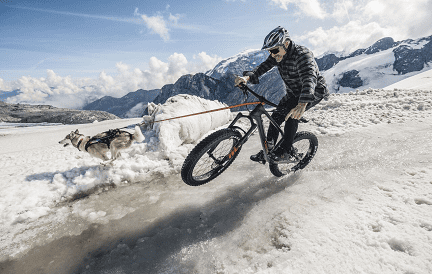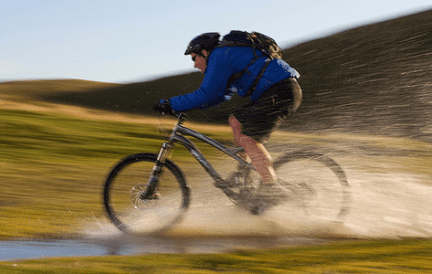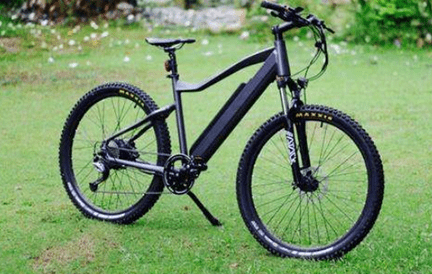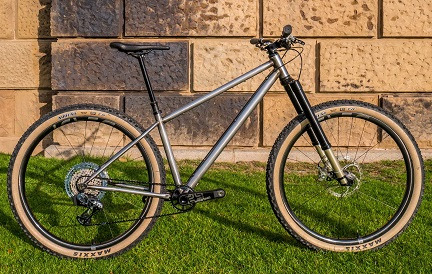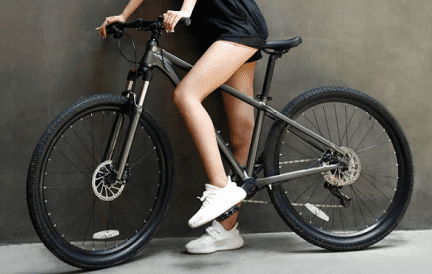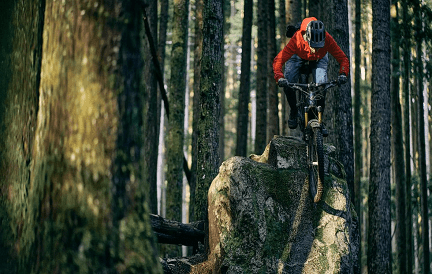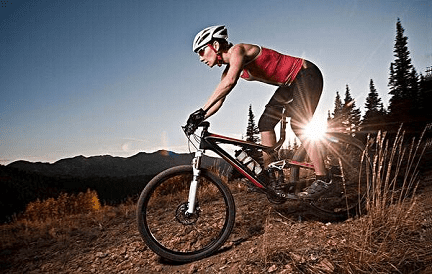Enduro is a type of mountain bike competition. The concept was straightforward: get to the top of a mountain and race down using a time-trial format. In this article, we will talk about using an Enduro hardtail mountain bike in an Enduro race.
- Part 1: What is a Hardtail Mountain Bike
- Part 2: Types of Hardtail Mountain Bike
- Part 3: Racing Enduro on a Hardtail
- Part 4: Summary
Part 1: What is a Hardtail Mountain Bike
A hardtail mountain bike is a bike that has a solid back end, meaning there is no rear suspension. They can have either stiff forks or forks with suspension travel at the front. Riders usually ride a hardtail mountain bike on a wide variety of off-road terrains. A hardtail bike’s front suspension will aid riders in traversing challenging off-road terrain. When traversing lumps, bumps, and jumps, the front suspension will absorb a portion of the impact, reducing the rider’s burden.

Hardtail mountain bikes are ideal for cycling on a variety of terrains and situations. Their adaptable and robust character enables them to perform well in most riding environments. Mountain trails, fire roads, and pump tracks are areas suitable for hardtail mountain riding. Besides that, hardtails are also excellent for less-experienced riders and excel on less demanding terrain, including gravel and stone trails, forest walks, and even city streets.
Part 2: Types of Hardtail Mountain Bike
There are types of bikes for various riding styles, such as
2.1 Cross Country Hardtail
Cross-country hardtails are ideal for riding over long distances. In general, the bikes feature thinner tires, more gear ratios, and less front suspension. As they are meant for traveling long distances, weight reduction is essential. In the context of this, removing the rear suspension and riding a hardtail is an effective technique to keep the bike light. Additionally, the terrain is typically not as rough or difficult as in other disciplines, making the bike more suitable.
2.2 Trail Hardtail
Trail bikes are all-terrain bikes that are capable of traversing a range of terrain.
This category of hardtail bicycles often has higher front suspension and slacker angles. These hardtail bikes are a wonderful alternative for riders who are experimenting with a variety of riding styles.
2.3 Enduro Hardtail
Enduro hardtail bikes are designed to handle descents but must also be able to climb in order to traverse the terrain between descents. They are made with longer top tubes, larger wheelbases, and shorter stems to facilitate more aggressive riding.
They feature greater suspension than either trail bikes or cross country bikes, often between 140mm and 170mm, and have more in common with downhill bikes due to the nature of the riding. However, some riders choose a hardtail for a number of reasons: they are easier to repair if you encounter issues on the trails, and they are lighter.
2.4 Electric Hardtails
Electric Hardtail is a hardtail mountain bike with a motor beneath the cranks. The motor allows riders to explore the most amount of terrain available. The lack of rear suspension helps to offset the added weight of the battery and motor. This type of bike is an excellent option for those who like to travel as far as possible without effort.
Part 3: Racing Enduro on a Hardtail
You can use mtb enduro hardtail in a hardtail Enduro race as long as the event organizer allows it. Some Enduro competitions even have a hardtail-specific section.
3.1 Hardtail Disadvantages
Enduro riding with a hardtail is enjoyable, but it has a weakness. The absence of rear suspension is the only weakness of a hardtail.
Suspension on mountain bikes is not primarily intended to make the ride more comfortable, although this is a benefit. Suspension’s primary function is to improve traction. When a wheel strikes an obstacle in the road (such as a tree root or a tiny stone), the suspension compresses and absorbs the impact. Consequently, the bike tire has an easier time remaining static. The additional traction improves the ride’s speed and safety.
Enduro racing consists of several timed downhill stages where full-suspension bikes will always have the advantage due to their greater traction. A full-suspension bike can traverse several obstacles that a hardtail would have to prevent bouncing off of them.
3.2 Hardtail Advantages
Hardtails may not be best for enduro racing, but they provide a number of advantages. Hardtails mtb are cheaper, A hardtail may restrict your ability to win an enduro race, but it will allow you to compete. Not only cheaper, but it is also easier to repair due to the absence of a rear shock.
Besides that, a hardtail bike is usually lighter. There are several somewhat lightweight Enduro bikes, but they are quite expensive. The low weight of hardtail bikes makes them better for climbing. This is essential for riders who wish to traverse all types of terrain.
Lastly, a hardtail bike is versatile. The addition of slick tires and a rack for bags or panniers can quickly transform a hardtail into a city bike. Technically, the same can be done with a full-suspension bike, but it is ineffective since full-suspension bikes are too expensive to keep outdoors.
Part 4: Summary
A hardtail mountain bike or hardtail mtb is a mountain bike without rear suspension. There are different types of hardtails for different riding styles, such as Cross Country hardtails, Trail hardtails, Enduro hardtails, and Electric hardtails. Meanwhile, Enduro is one of the mountain bike competitions. You have to get to the top of a mountain and race down at a specific time. Racing Enduro on a hardtail is permitted as long as the event organizer allows it. But, using a hardtail on an Enduro competition will put you at a disadvantage. Because hardtail bikes lack rear suspension, you will have a hard time on Enduro downhill stages. Besides that, a hardtail also comes with advantages, such as it being cheaper than an Enduro. Hardtail bikes are also lighter, which makes climbing easier.

